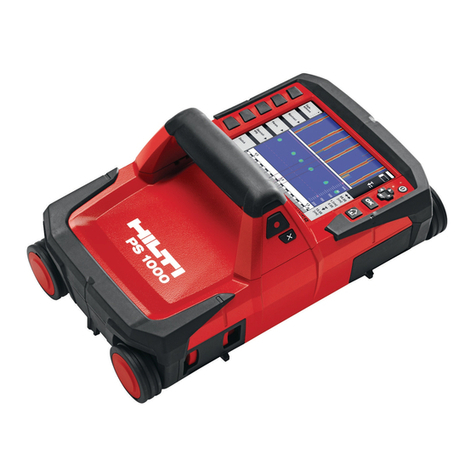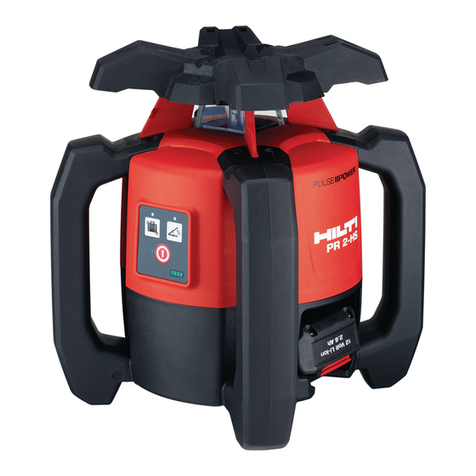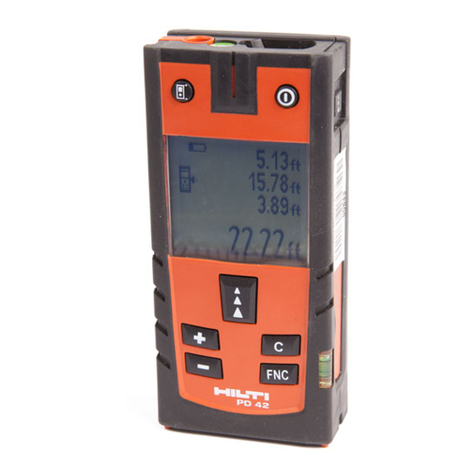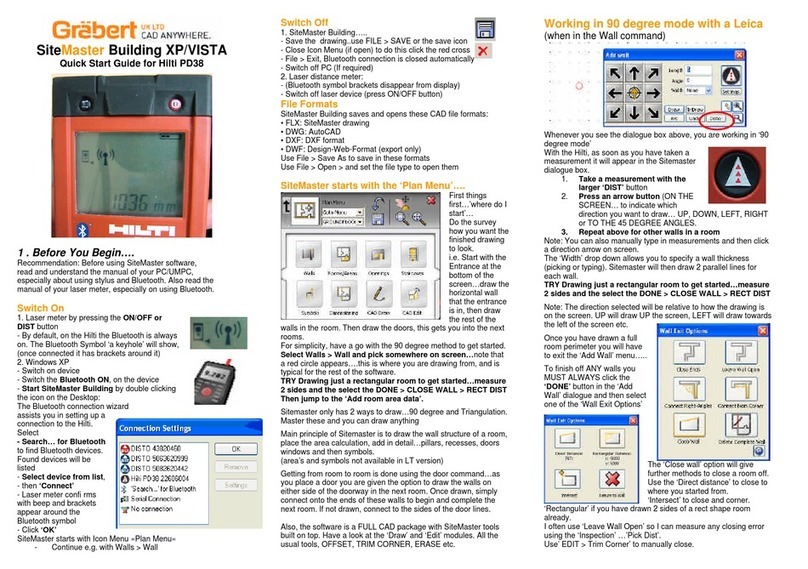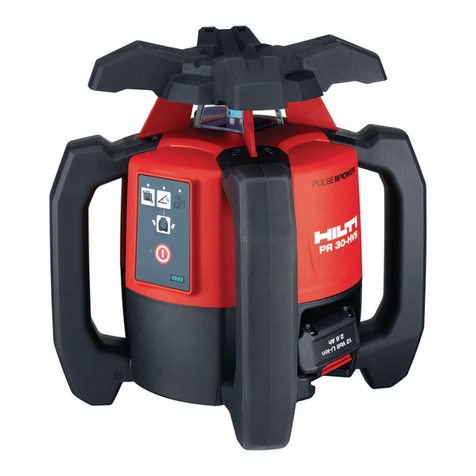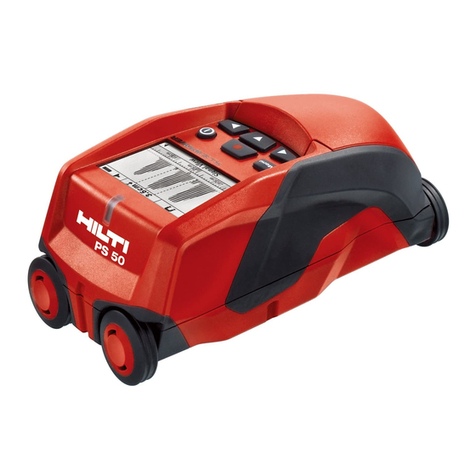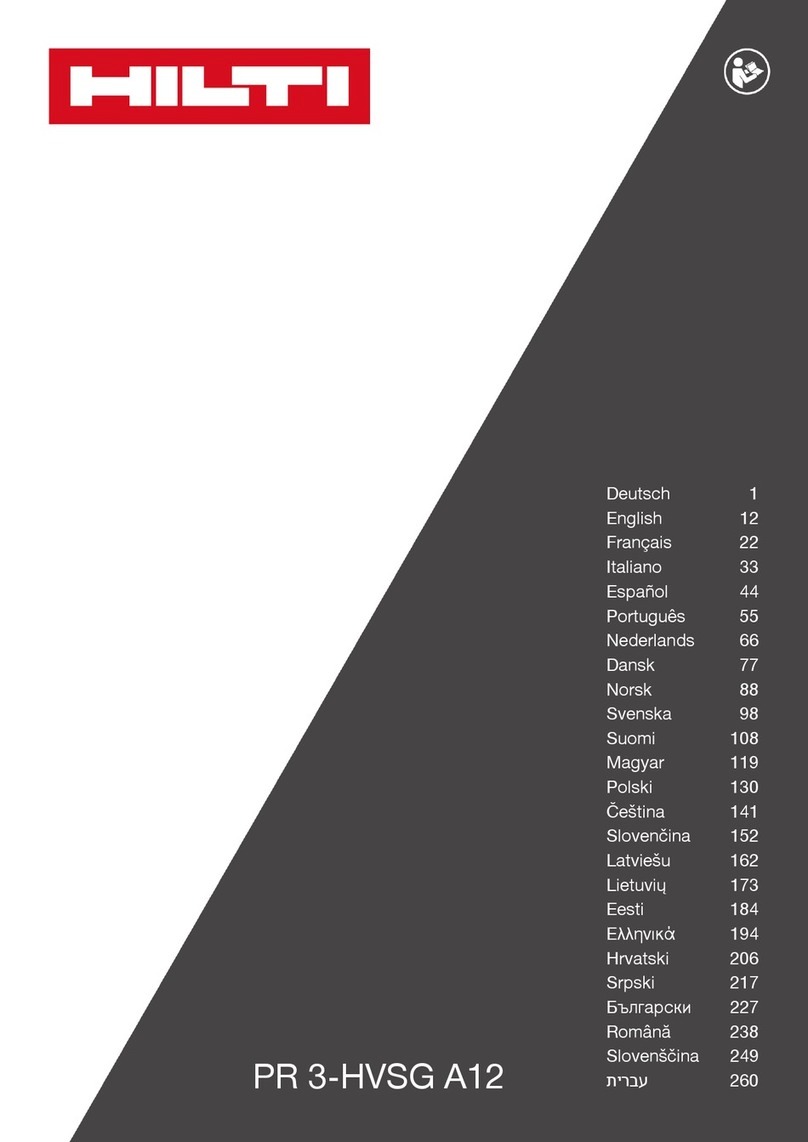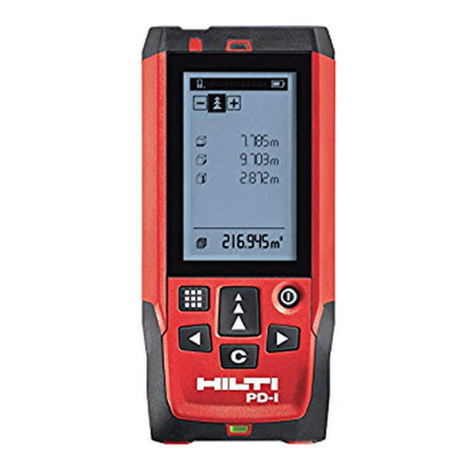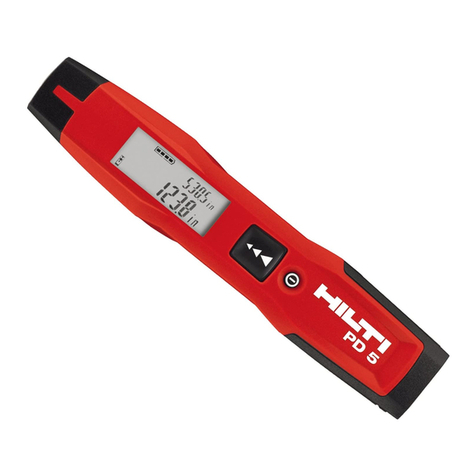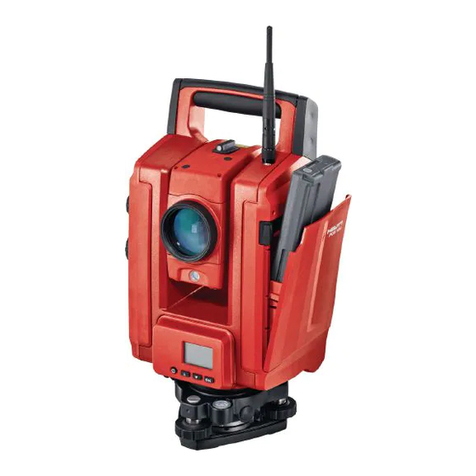5
en
h) Rapidly changing conditions, e.g. persons walking through
the path of the laser beam, falling snow, etc., may lead
to incorrect measurements.
i) Do not point the tool toward the sun or other powerful
light sources.
j) Take the influences of the surrounding area into account.
Do not use the tool where there is a risk of fire or explo-
sion.
5.2 Proper organization of the workplace
a) Avoid unfavorable body positions when working from
ladders. Make sure you work from a safe stance and
stay in balance at all times.
b) When the tool is brought into a warm environment from
very cold conditions, or vice-versa, allow it to become
acclimatized before use.
c) As a precaution, check the previous settings and adjust-
ments you have made.
d) Secure the area in which you are working and take
care to avoid directing the beam towards other per-
sons or towards yourself when setting up the tool.
e) Use the tool only within its specified limits.
f) Observe the accident prevention regulations applica-
ble in your country.
5.3 Electromagnetic compatibility
Although the tool complies with the strict requirements of
the applicable directives, Hilti cannot entirely rule out the
possibility of the tool being subject to interference caused
by powerful electromagnetic radiation, leading to incorrect
operation. Check the accuracy of the tool by taking mea-
surements by other means when working under such con-
ditions or if you are unsure. Likewise, Hilti cannot rule out
the possibility of interference with other devices (e.g. air-
craft navigation equipment). The tool complies with the
requirements of class A; The possibility of interference
occurring in a domestic environment cannot be excluded.
5.4 General safety rules
a) Check the condition of the tool before use. If the tool
is found to be damaged, have it repaired at a Hilti ser-
vice center.
b) The user must check the accuracy of the tool after it
has been dropped or subjected to other mechanical
stresses.
c) Although the tool is designed for the tough conditions
of jobsite use, as with other measuring instruments it
should be treated with care.
d) Although the tool is protected to prevent entry of damp-
ness, it should be wiped dry each time before being
put away in its transport container.
5.5 Electrical
a) Keep the batteries out of reach of children.
b) Do not allow the batteries to overheat and do not expose
them to fire. The batteries may explode or release toxic
substances.
c) Do not charge the batteries.
